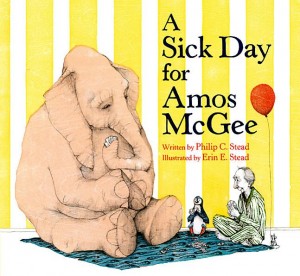Finding Inspiration in Children’s Books
by Jared Richards, Learning and Information Services Supervisor
 Once upon a time, I decided I was going to draw a tree every day, and I haven’t missed a day yet. I now have over two hundred drawings and what amounts to a part-time job, because some of the drawings take more than five hours. This is caused by a mix of inexperience and trying to draw more complex ideas in an attempt to keep things interesting. Occasionally, these ideas come to me without much effort, but I have recently found myself leaning more heavily on external inspiration.
Once upon a time, I decided I was going to draw a tree every day, and I haven’t missed a day yet. I now have over two hundred drawings and what amounts to a part-time job, because some of the drawings take more than five hours. This is caused by a mix of inexperience and trying to draw more complex ideas in an attempt to keep things interesting. Occasionally, these ideas come to me without much effort, but I have recently found myself leaning more heavily on external inspiration.
One of the best sources for this is children’s books. They are often filled with beautiful illustrations, from simple line drawings with flat colors to highly detailed drawings with varied textures and complex shading.
Chris Van Allsburg began his art career as a sculptor but is probably best known for his books “The Polar Express” and “Jumanji.” His first book, “The Garden of Abdul Gasazi,” features black-and-white illustrations drawn with a charcoal pencil, and they look amazing. The entrance to the garden features an ivy wall with countless leaves meticulously drawn to the point of just looking like a photograph with a grainy filter. Throughout the book, there are also numbers of different trees, both coniferous and deciduous, featuring basic tree shapes in the background and more realistic trees in the foreground that you can easily imagine rustling in a breeze.
“Anno’s Journey,” by Mitsumasa Anno, is based on the author’s own travels in Europe and is filled with finely detailed pen-and-ink with watercolor illustrations. It is purely a picture book, no words, and every time you flip through the pages, you’re bound to find something new because each page is packed with activity and really gives the sense of a living world. This book pre-dates “Where’s Waldo?” but I kept expecting to find him peeking out front behind a building because it has that same investigative feel.
One of my new favorite illustrators is Erin Stead, who often teams up with her husband, author Philip Stead. “A Sick Day for Amos McGee” features a combination of woodblock printing for color and pencil for detail. She starts by carving out the shapes she wants color for, like the animals, in blocks of wood. Paint is applied to the carved wood, and the blocks are used like stamps on the page. Stead then adds detail and creates the scene itself with pencil drawings. It’s a really cool effect, especially when you can see the woodgrain in the color.
For another one of their books, “Bear Has A Story to Tell,” Stead created her own paint by grinding up chalk pastels and mixing them with water. This creates an interesting textured look for the illustrations, which she again penciled on top to add detail.
The grass is always greener on the other side, so sometimes I like to entertain the idea of becoming an illustrator, conveniently ignoring all the time and effort required, and the stress that can come with creativity. To help feed these entertainments, we have two practical books at the library that have helped me explore this imagined future. In “Illustration that Works,” Greg Houston covers everything from what an illustrator is, the different mediums that are used to create illustrations, tips and tricks, and even includes exercises like designing a book cover or drawing a portrait.
“How to be An Illustrator” by Darrel Rees dives into the specifics of topics like preparing a portfolio, promoting yourself, and explaining how to create an invoice for your work. My favorite part, however, is that it is filled with interviews with illustrators and art directors, so instead of getting one perspective on what it is like to be an illustrator, you’re getting over a dozen.
Lastly, sometimes the best inspiration is to actually see someone create art, not just looking at the final product printed on a page. This gives you a greater appreciation for the process and proves that it is actually doable by human hands, with a lot of practice.
CreativeBug is a great online resource for this, that is available free through Manhattan Public Library. You’ll find full classes, like “Drawing and Illustration Basics” with Heather Ross and “Daily Observations: Drawing Objects from Life” with Mou Saha. They also have a collection of live videos during which they sit down with artists like Lisa Congdon and George McCalman, and create art while having a conversation or cover interesting techniques like adding salt to watercolor paintings, who would have thought?

